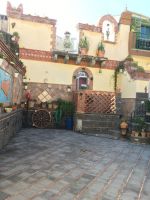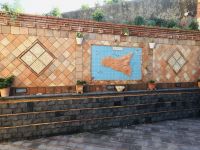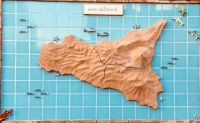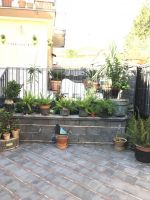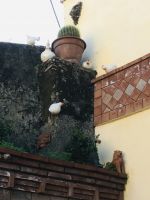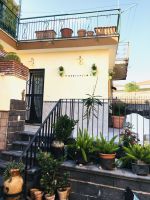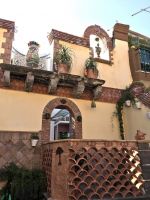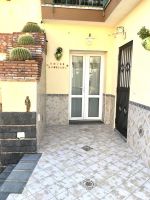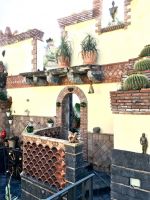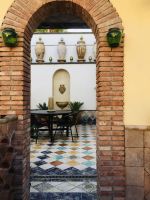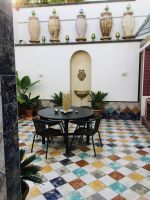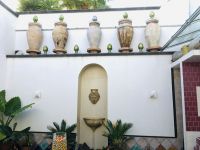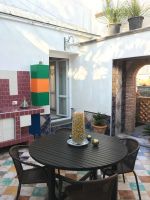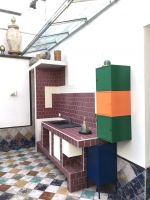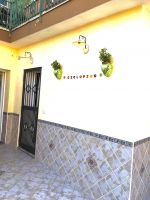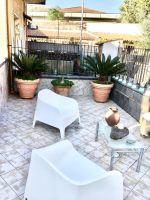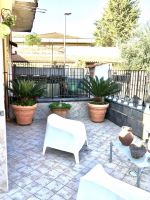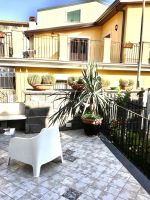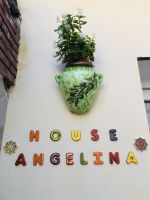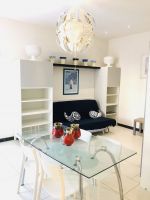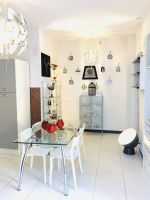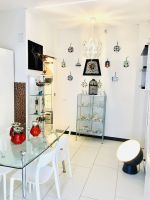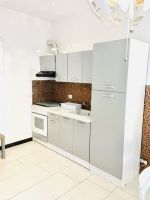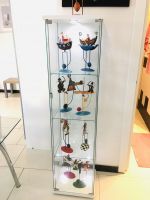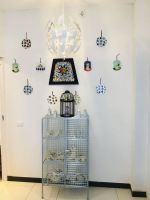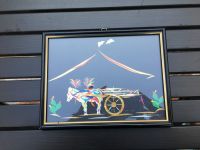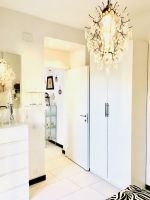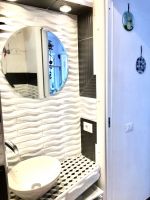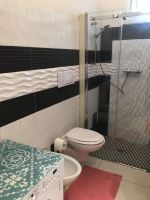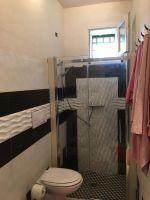Viagrande
The origins of Viagrande are described in 1875 by Salvatore Mirone and as he said the village took its name from the ancient street towards Messina starting from Catania. The earliest information that we have dated from 1124 when there were only two little towns ( Villalori and Vilardi, now called Viscalori and Velardi). Although the terrible eruption of 1408 the town of Viagrande kept developing even because of two important roads crossing it: the one linking Catania to Messina
and another one linking Etna volcano to the sea, passing Acireale. In that period there was already the most important church of the town, dedicated to the Virgin of Idria, that was destroyed by the terrible earthquake of 1693. It was then rebuilt in its current location: Piazza San Mauro, and it became the mother church. Piazza San Mauro constitutes the historical center of the town: it has been built with lava stone artfacts, with characteristic balconies and facades with remarkable ornaments and art facts of high artistic value and that is where you find our accommodation. Viagrande, or Varanni as it is called in Sicilian dialect, should also be remembered because it gave to Nedda, the eponym heroine of Giovanni Verga’s novel, the nickname of ‘la Varannisa’.
The Territory
The hilly town, full of ancient traditions, located at 400m above sea level, is also known for its vineyard and its gastronomy. Viagrande belongs to the territory of Catania and its inhabitants speak the dialect of Catania. Inside this territory, which is partly part of the Parco of Etna, we can find mild reliefs and ancient lava flows mitigated from the constant action of the weathering.
The general harmony of the foothill landscape is completed by the many adventitious cones, little volcanic structures that witness the many eruptive events occurred. The closest adventitious cone to the central cone, next to Viagrande is that of Monte Serra. Nowadays the charm of the cone has been revalued mainly because of its peculiar shape: it is shaped as a horseshoe and this is due to the collapse of the summit part of the crater and of a side of the cone, provoked by the emptying of the emission conduit after an eruption. During the centuries, water has washed the cumulated materials, shaping the north-west side of the cone that nowadays is linked to the surrounding countryside. A staircase with 350 steps has been realized in lava stone and it represents the straightest way for reaching the top of Monte Serra. Step after step, the landscape expands: you can see the Etna volcano, the adjoining towns, the sea and Augusta gulf. On its top the landscape is complete: you can see Taormina and Calabria.
Inside the territory of Monte Serra we can admire, the sole example of the entire South Italy, the house of butterflies, inside of whom we can also finds plants and birds. During the visit of the building it is possible to have an interesting lesson about the world of the insects and about the biology of butterflies, free to fly in an environment which reproduces their natural habitat. It is possible to closely observe them. You will observe the most beautiful and biggest butterflies in the world but also the most peculiar, starting from those able to perfectly camouflaging.
In the aviary other interesting tropical forests insects are guested as the stick insect, leaf insect and other gigantic beetles. Furthermore on Monte Serra there is an artificial slope with a little ski lift and lightning, a hundred meters long functioning during all the year.
The churches, the districts and the villages
The most important church is that dedicated to the Virgin of Idria. The second most important church is that of Saint Biagio, in Viscalori. Here, in Viagrande, the monks carried on their simple lives in yards with olive trees, arable, trees a little house (rebuilt in the 17th century by F. Battaglia or by Vaccarini. Both of them worked in the school of Via Crociferi) and its depots, with the church of Saint Ignazio, which they put on a territory untouched by lava.
The town’s borders where made by Indirizzo and by Via del Collegio. On the occasion of the 16th century Church’s enlargement some parts of the territory were given to Viagrande. When the Jesuits were expelled from the Kingdom (1767), the estate was bought in 1769 by Anna Maria Alliata e Di Giovanni, princess of Villafranca. On Via Garibaldi (which already was Viale Delle Rimembranze) on whose sides there were many trees dedicated to the memory of those died during wars and that’s why it is called Viale delle Rimembranze.
Two important places in Viagrande are: Piazza Urna, where you can find a famous café, and Piano Gelsi (nowadays Piazza G.Matteotti). In this last, rebuilt ten years ago, there is the entrance of the public garden.
The village of Viscalori, that already in the XIV century was inhabited by woodcutters, has always developed in an autonomous way from Viagrande, both because of its certain historical existence before Viagrande itself and for its natural position. 1408 lava flows spared the village although they devastated the countryside. From via Viscalori many alleys departed among which one is an old spring- washhouse with a cross. The surrounding countryside is crossed by many old ‘trazzere’ ( a straight road crossing the Sicilian country side and whose aim was that of letting the passage of the herds) bordered by walls. Carrying on via Viscalori we reach contrada Indirizzo, from where is possible to see a beautiful sight of Viagrande. At the end of the road we reach a widening where until the 70s there was the Church of Indirizzo close to the homonym valley.
Scalatelli district was born as a rural settlement on 1408 lava declivity. The district has developed around the 17th century church of S.Antonio Abate. In its heart we find the suggestive Piazza Francesco Maria Scuderi. On the widening there is the front of Palazzo Scuderi.
Economy:
Agricultural products: citrus fruits, wine grapes and table grapes.
Industries and farms: wineries, feed mills, pasta factories and agricultural implements farms.
Artisanship: the most important artisanship is made by the decorators of Sicilian chariots and that of the iron masters, who work iron without the usage of modern machines.
Monuments:
Many houses present lively baroque portals made in lava stone. The Mother Church is the oldest and most interesting building: with its Renaissance façade, the church structure is inspired by the one of Trecastagni’s Mother Church. On its inside we find fine stuccos and frescos and it wards the relics of Saint Mauro Abate. The Mansion of Prince Manganelli has been built in a neoclassical style and it was realized by architect Carlo Sada (who made the decorations of Catania’s Massimo theatre).
Viagrande today:
Nowadays the economy of Viagrande is based on viticulture and on citrus, which occupy almost all the agricultural territory with a deep selection of lands adapt to viticulture. We also have the research of peculiar local vineyards and of new oenological techniques through which they want to reproduce the ancient tastes with the use of the most modern techniques. This research brought in the territory of Viagrande the production of unique wines recreating the ancient tastes and which is able to keep them the same through the passing of time. They are high qualitative products which occupy an high rank among the regional agricultural activities.
Gastronomy:
Pasta col macco (fava beans), siciliane (stuffed pizzas with tuma cheese and anchovies), spumoni (ice-creams).
Celebrations:
January 15th: celebrations for the Saint Patron of Viagrande, San Mauro Abate.
Distances:
Catania: 15 km
Catania airport: 25 km
Catania central station: 15 km
Taormina: 40 km
Etna (Rifugio Sapienza) : 30 km
Etna ( Rifugio Sapienza ) : 30 Km
Bus (AST) timetables:
Winter timetable:
Catania- Viagrande
06:35 06:30 07:00 07:00 08:15 09:00 10:00 11:00 12:00 13:00 14:15 15:30 17:30 18:30 19:30 20:30
Viagrande – Catania
06:40 07:10 09:10 09:55 11:05 11:20 12:55 13:25 15:10 15:10 15:25 16:05 17:25 18:25 19:20
Summer timetable:
Catania – Viagrande
06:00 07:00 07:00 08:15 09:00 10:00 11:00 12:00 13:00 13:30 14:15 15:30 16:30 17:30 18:30 19:30 20:30
Viagrande – Catania
06:40 07:10 07:10 09:10 09:55 11:05 11:20 12:55 13:20 14:45 15:10 16:05 17:30 18:25 19:20
House Angelina





